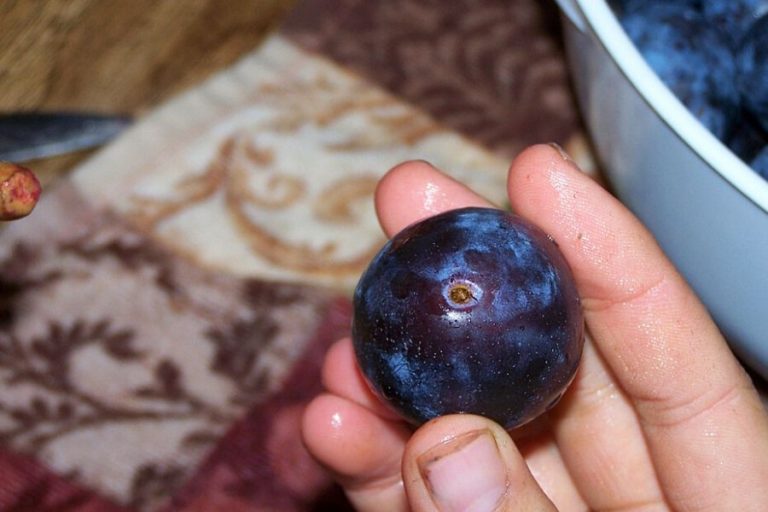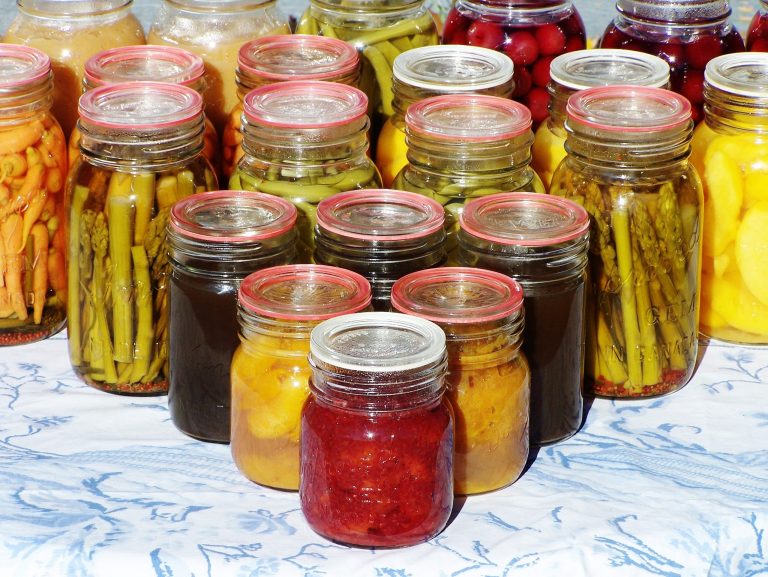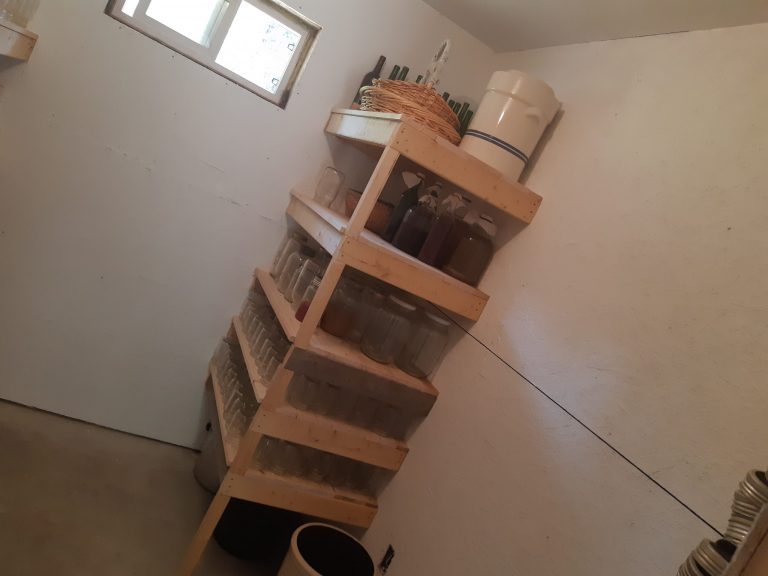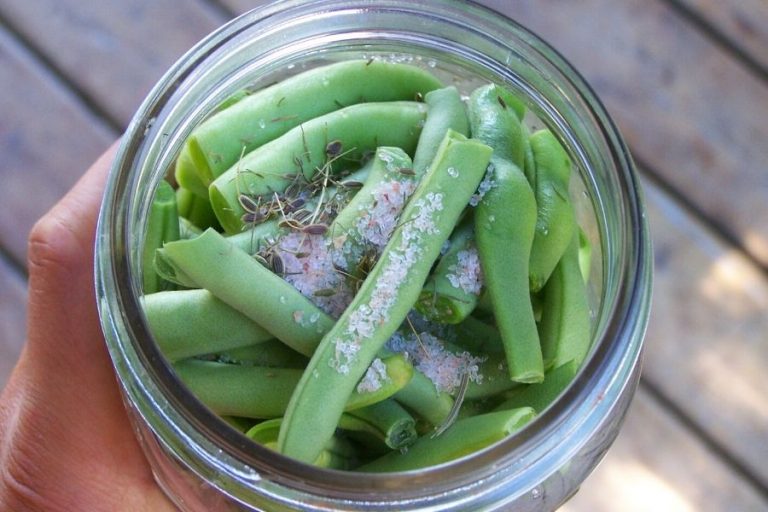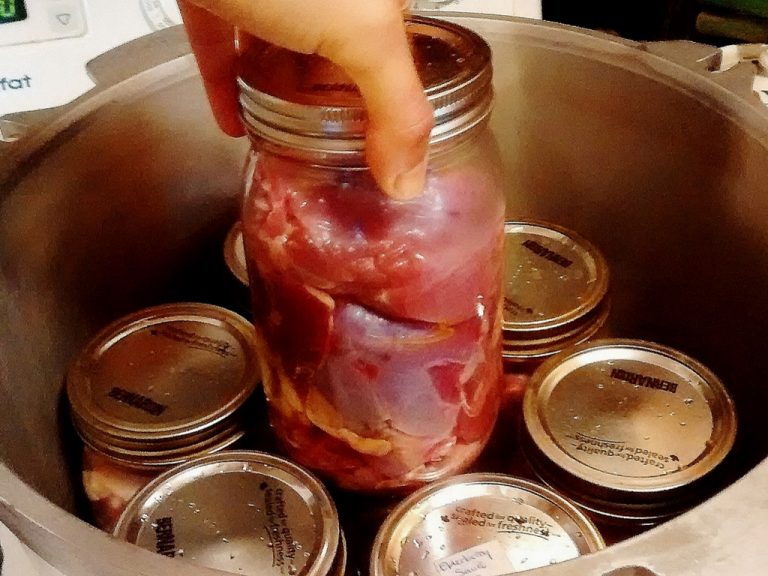5 Simple Ways to Find Used Canning Jars for Free
Are you trying to build a collection of glass canning jars for home food preservation, but don't have extra money to spend? Here are some simple ways to find used canning jars for free, so you can build your collection at no cost.

When I first started canning as a young wife and homemaker, I only had a few dozen jars in my possession. An aunt had given them to me, and I took great pride in my collection.
At the time, I didn't know where or how to find canning jars, so I treated them with white kid gloves. Heaven help my man if he dropped or broke one!
When we decided to move a year into married life, I took great pains to carefully package and box my jars, so they would survive the 1,000 km trip south in our mini van.
My caution seems funny to me now, but I didn't know where to find more canning jars at an affordable price. So I carefully guarded my little, mismatched, random collection.
Settled in an agricultural farming community, I found lots of food to preserve. And as my canning skills increased, I found myself wishing for more jars. In fact, I wanted to have such a large collection, I couldn't possibly use them all in a season!
At the time, we definitely didn't have money to buy all-new jars. So I began searching for free (or very cheap) options.
I looked everywhere.
And I didn't care if they were regular mouth glass jars or wide mouth glass jars. I didn't care if they were small jelly jars or huge half gallon jars. I didn't care if they were Ball jars or Kerr jars.
I just wanted jars.
So began my journey of finding ways to source jars for free!
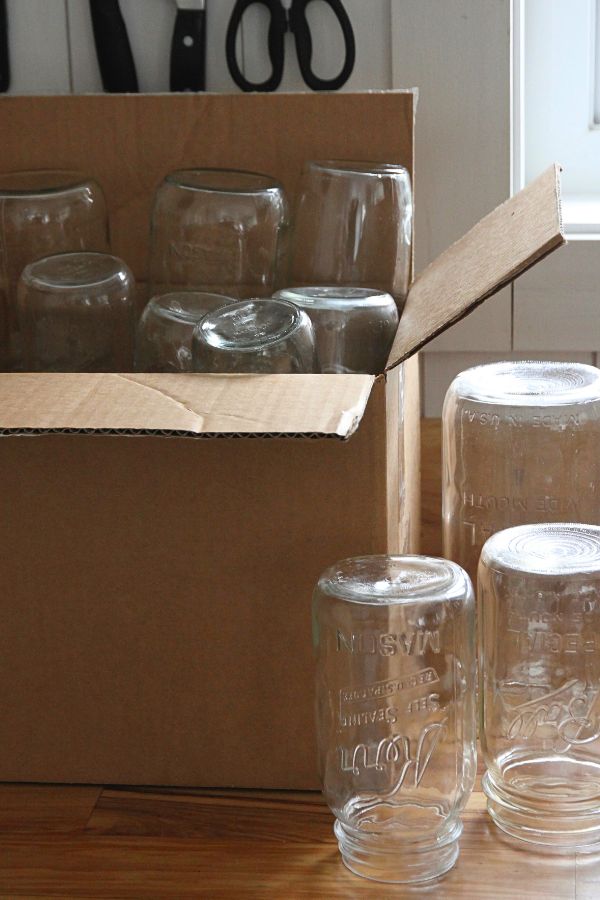
I kept my eyes open on our local buy-and-sell facebook page for free giveaways.
It didn't take me long to learn that summer is the best time to find used canning jars at garage sales (which people would sometimes give me for free).
And as I talked about my home canning activities, friend and family took interest and would drop off a box here or there.
Sometimes I would bike to our local thrift store, pay a few dollars and return with a large backpack that was stuffed full of canning jars. I'm sure I made quite the sight.
It took me about 2 years to build a collection of 600+ canning jars. And like I had hoped, I was able to gather extra jars so I could give away home canned goodies as gifts, without worrying about running out of jars.
It is possible to build a canning jar collection with little or no money to spend. It just takes time, patience and awareness of what you're looking for.
I hope this will inspire you to try, because every country woman needs a cast iron skillet, garden seeds and an overabundance of glass jars on the pantry shelf!
How to Identify Glass Canning Jars
If you grew up around canning jars, you already know what to look for. But for folks who are new to canning? You need to know the difference between actual canning jars, and jars that are intended for dry food storage or creative décor in the home.
The latter aren't necessarily made to withstand the heat of a water bath canner. Plus, the mouth sizes won't likely fit conventional metal lids you use for home canning.
Characteristics of Glass Canning Jars
Here are some tips that will help you identify real canning jars from fakes.
- Canning jars are made of thick, heavy glass.
- The bottoms of canning jars are gently rounded, without square angles.

- Shoulders of canning jars will be gently rounded as well; the exception being wide mouth pints (500 ml) and smaller jars like the half pint (250 ml) and 4 oz (125 ml).

- Jars made for home canning usually have a logo (I give you a list below).
- Canning jars come in specific sizes; learn to identify them and it'll help you find real preserving jars.
- The threads on canning jar mouths are made of thick and heavy glass.
- In the USA there are only two mouth sizes on canning jars: the large (86 mm) and standard (70 mm).
- Note: in Canada, you may also come across a 3rd mouth size (78 mm) that is only found on Gem or old Jewel jars.

List of Canning Jar Brands
Canning jars come in several different brands. And some of the smaller jars (like the 4 oz or 125 ml) may not have brand names at all!
If you see the word Mason on a jar, you've got the real deal! Here are some common brands to look for:
- Atlas
- Ball
- Bernardin (Canadian)
- Dominion (Canadian)
- Gem (Canadian)
- Golden Harvest
- Kerr
- Mason

Standard Canning Jar Sizes
Learning to recognize canning jar sizes will help you identify the real thing. Ball mason jars (and all other brands) come in 6 sizes. They include the following:
- 2 quart or half gallon (2 litre)
- quart (1 litre)
- pint-and-a-half (750 ml)
- pint (500 ml)
- half pint (250 ml)
- 4 oz mason jars (125 ml)
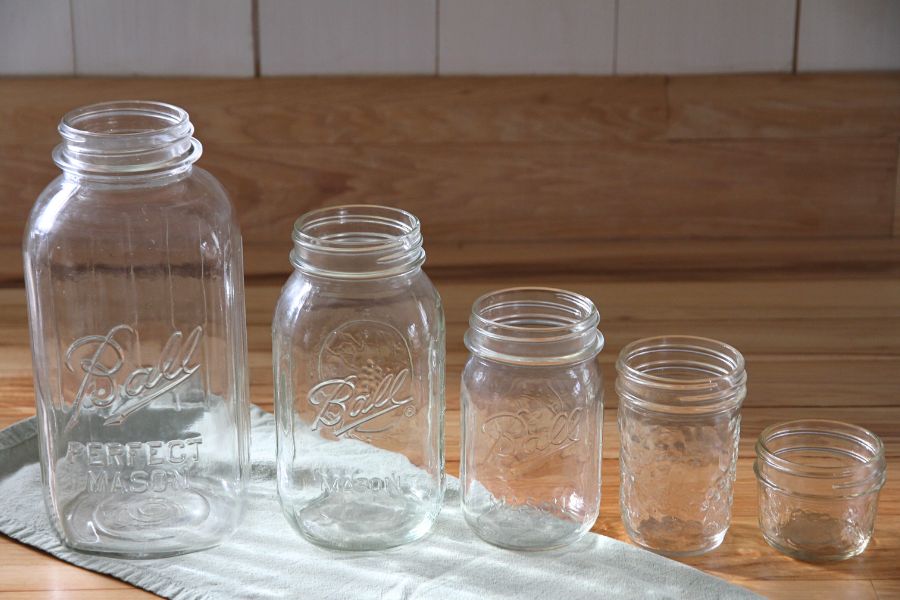
How to Find Free Canning Jars
Now that I've thoroughly exhausted details on how to identify real canning jars, here are some excellent ways to find them for free (or very cheap)!
Swap or Trade
This is an old fashioned way of building your canning jar collection for free. If you know someone who has extra jars (an older woman whose family is grown and gone or someone who inherited jars they don't use), trading is a wonderful way to go.
I love this option, because whether you offer an item or service, trading is beneficial for everyone!
You can also swap jars if you have sizes someone else wants (and vice versa).
I did this with a friend.
About a year into building my canning jar collection, I discovered the Canadian Gem jar with its reusable glass lid and rubber gasket ring (read about my discovery here).
I had a lot of wide mouth jars, and my friend had a lot of Gem jars she wanted to replace with large mouths. We did a fair trade: my wide mouths for her Gem jars.
We were both very happy with the swap!
Reuse Mayonnaise, Spaghetti Sauce and Tomato Sauce Jars
If you buy glass jars of canned food at the grocery store, you have another free resource at your fingertips. Often mayonnaise, salsa, spaghetti sauce and tomato sauce come in sturdy glass jars that won't crack in the water bath canner (though they aren't generally recommended for pressure canning).

Before you collect too many, make sure the mouth size fits either wide or standard canning lids and metal screw bands.
Don't be afraid to ask friends and family to collect for you as well, if you choose to go this route!
Note: when using these jars for water bath canning, you may get sizes just smaller than a quart (1 litre). To be safe, treat them as quarts and process them accordingly.
Advertise on Your Local Buy and Sell Group
People often throw out canning jars, not because they want to be wasteful but because they don't know who to give them to. Chances are, you can snag free canning jars if you just put the word out.
A great place to do this is through a local, facebook buy-and-sell.
Because whether someone inherited boxes of jars, has decided to quit canning or just needs to cut back because their kids are grown and gone, most folks are delighted to hand them off to someone who will actually use them.
Create Ad With Online Classifieds
Looking for more jars? Run a free ad on Craigslist (for USA) or Kijiji (for Canada). Be sure to state your area. You don't want to drive too far to pick up jars, unless you find a real haul.
Let Folks Know You're Into Home Canning
When folks learn that you're into home canning, they just might "bless" you with their extras, grab boxes for you at garage sales or pass the word along to their grandma who is downsizing her collection.
I've personally received a number of jars this way, and I love the surprise factor and the variety that often comes with it.
Yes, there's often a lot of dust, dirt and dead bugs involved. But after you've cleaned those jars up, they're worth having on hand!
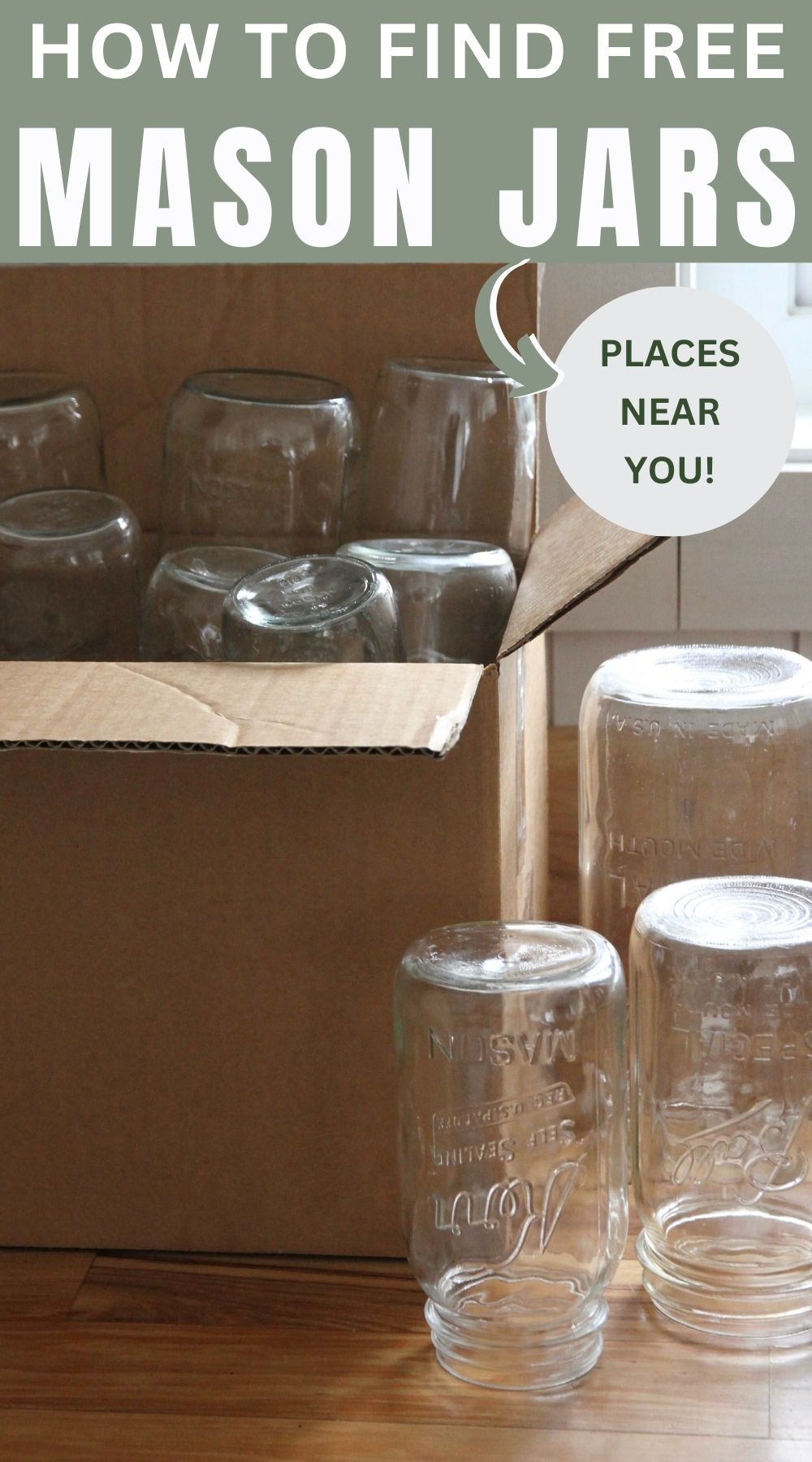
How to Check Your Jars Before Using
Used canning jars don't always come in perfect condition. So as you wash them up, be sure to go over each one and check to make sure they're in good condition.
- Look for cracks in the glass and especially on the low half and bottom of the jar.
- Run your index finger over the rim of the jar, checking for a smooth surface without chips or cracks.
- When in doubt about a jar's ability to withstand the canning process, go ahead and fill it with water, pop in into a boiling water bath canner and process it for 10 minutes. If it holds, it should be safe for home canning.
If you find a few damaged jars, you can keep them for dry food storage. Just be sure to mark them, so someone doesn't put them back into your canning jar collection!
Other Canning Supplies to Watch For
When you're collecting jars, be sure to keep your eyes open for other canning supplies as well. Trust me. You'll find them! Here's a list.
Jar Lids & Bands
In your search, you'll come across wide mouth lids and regular mouth lids. These are generally good for one-time use, so I would only recommend taking new lids (aka unused ones).
I do have a tutorial here that shows you how to reuse lids in a pinch, but always aim to use new ones in your home canning. Accompany metal bands for both sizes are always a good thing!
Jar and Lid Lifters
A jar lifter is a necessity when handling hot jars. It never hurts to have two on hand, just in case one comes apart or goes missing (thanks to your children or husband). Lid lifters are nice if you preheat your lids in a small pot of hot water before using.
Cooling Racks
Cooling racks (some folks call them baking racks) are nice to have when you cool hot jars of food on the kitchen counter top. Just make sure your racks are stable before loading them up!
Canning Books
If you receive jars from someone who inherited canning supplies or is stepping away from home canning, you just might have the option of receiving a few canning books. Take care with older editions. Their preserving recipes may not be up to date with today's food safety findings.
Water Bath or Pressure Canner
It's not uncommon to find granite water bath canners or even large stainless steel pots that can be converted to a canner.
As long as there's a lid, you can make your own rack for the bottom and be in business!
Special Tip for Finding Glass Canning Jars
Patience is the key to building a free canning jar collection and your area will determine how quickly this happens.
I'm fortunate to live in a frugal-minded farming community where jars are common. But if you live in a location where you rarely see them, don't be afraid to ask a friend or family member who lives in a smaller community to keep their eyes open on your behalf.
You can build a great collection that way too!
